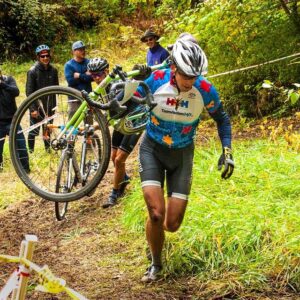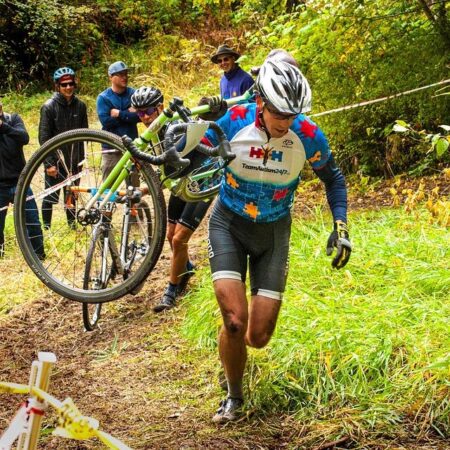Women on Bikes: Unpacking the Moral Panic in Australia
In recent years, the increasing presence of women cycling through Australian cities has ignited a complex and often heated debate. As more women adopt bicycles for commuting, fitness, and leisure—driven by concerns over health, environmental sustainability, and urban congestion—a surprising wave of moral panic has surfaced. Critics contend that this rise challenges entrenched gender expectations while raising questions about safety and societal attitudes toward women occupying public spaces. This article examines the roots of this moral panic phenomenon, revealing how cultural perceptions around female cyclists mirror wider social tensions. It also considers what these dynamics mean for women’s empowerment and urban transport planning across Australia’s evolving roadways.
Decoding the Moral Panic Surrounding Female Cyclists in Australia
The growing anxiety about women cycling publicly reflects deeper societal unease regarding gender roles, safety concerns, and how public spaces are shared. Media outlets have played a significant role in amplifying these fears by framing female cyclists as both icons of newfound freedom and sources of disruption to traditional norms. Sensational headlines often emphasize risks or incidents involving women on bikes—fueling calls for tighter regulations or increased policing—which can overshadow their achievements in reclaiming streets historically dominated by men.
This backlash against female cyclists is intertwined with broader feminist debates about autonomy and equality. Issues such as harassment on roads, inadequate infrastructure tailored to women’s needs, and unequal access paradoxically provoke apprehension rather than constructive conversations about inclusivity. The tension can be understood through several contrasting viewpoints:
- Empowerment vs Exposure: While advocates highlight cycling as a tool for independence and self-reliance among women, detractors focus on perceived vulnerabilities linked to traffic dangers.
- Urban Design Challenges: Proposals for expanded bike lanes meet resistance from those concerned about disrupting established traffic flows.
- Gender Norms Under Pressure: The visibility of female cyclists is sometimes viewed as challenging patriarchal traditions—eliciting both support from progressives and pushback from conservatives.
| Main Concerns | Community Responses |
|---|---|
| Road Safety Risks | Pushing for enhanced bike lane networks |
| Harassment Based on Gender | Cultivating supportive peer groups & initiatives |
| Inequitable Resource Access | Cycling promoted as inclusive community activity |
Media Influence: Shaping Public Views on Women Cyclists
The media’s portrayal of cycling plays a pivotal role in shaping societal attitudes toward female riders. Often emphasizing themes like danger or victimhood reinforces an image that cycling is inherently risky—especially for women—and may discourage participation among potential riders concerned about personal safety. Such narratives tend to eclipse positive aspects like improved physical health outcomes or environmental benefits associated with increased bicycle use.
Sensationalized coverage focusing disproportionately on accidents involving female cyclists risks fostering an atmosphere of fear rather than empowerment within communities. This skewed representation contributes to a divide between avid cyclists who view biking as liberating versus segments of the public who perceive it as hazardous behavior needing control.
Reframing media stories to spotlight women’s resilience—as active agents confidently navigating urban landscapes—can help shift perceptions positively towards embracing diversity within cycling culture. The challenge lies in promoting balanced reporting that encourages safe participation without perpetuating stereotypes or undue alarmism.
Building Safe & Inclusive Cycling Environments for Women: Practical Approaches
Creating welcoming spaces where women feel secure while riding requires intentional community efforts focused on inclusion and protection:
- Engagement Forums: Hosting regular meetups where female cyclists share experiences fosters mutual understanding while identifying specific local safety issues.
- Dedicating Women-Only Rides: Organizing exclusive events provides supportive environments encouraging confidence-building free from intimidation.
- Cycling Skills Workshops: Offering training sessions covering bike handling techniques, route planning strategies, and basic maintenance empowers less experienced riders.
Collaborations between advocacy groups, municipal authorities, and law enforcement further enhance protective measures:
- Bicycle Infrastructure Upgrades: Advocates push governments to expand protected lanes with clear signage at intersections; data shows cities investing heavily here see up to 30% fewer cyclist injuries annually (Austroads Report 2023).
- Aware Public Campaigns:Educational drives addressing harassment promote respectful behaviour towards all road users regardless of gender.
- E-Reporting Systems & Support Networks:Digital platforms enable quick reporting mechanisms so incidents receive timely attention alongside peer support resources.
| Tactic | Description |
|---|---|
| User Engagement | Facilitated discussions sharing lived experiences. |
| women-only rides | Safe group rides fostering camaraderie. |
| Cyclist Training | Skill-building workshops enhancing confidence. |
Concluding Thoughts: Towards Greater Acceptance & Empowerment for Australian Women Cyclists Â
As conversations around Australian women taking up cycling continue gaining momentum nationwide—with participation rates rising steadily (ABS data indicates a 25% increase since 2018)—it becomes evident that what some label “moral panic” actually exposes underlying cultural frictions related to gender equity.
Cycling remains one of the most accessible forms of sustainable transport offering substantial health advantages alongside reduced carbon footprints amid climate change urgency.
Yet persistent stigmas rooted in outdated stereotypes hinder many women’s full enjoyment without fear or judgement.
Progressive voices call urgently for inclusive policies prioritizing safe infrastructure development coupled with community-driven initiatives celebrating diversity among riders.
Ultimately dismantling fears surrounding females’ right to cycle freely demands coordinated action spanning media reformulation; policy innovation; grassroots mobilization—all aimed at cultivating respect plus equal access across Australia’s roads.
Whether navigating bustling city streets or tranquil suburban paths—the right every individual deserves is simple yet profound: freedom to move confidently under their own power.











